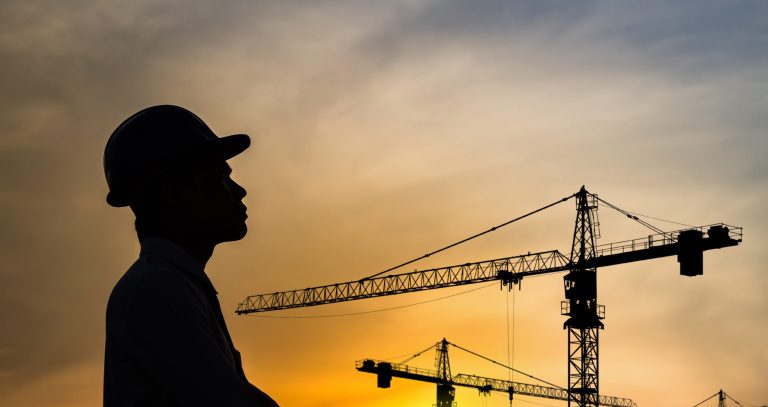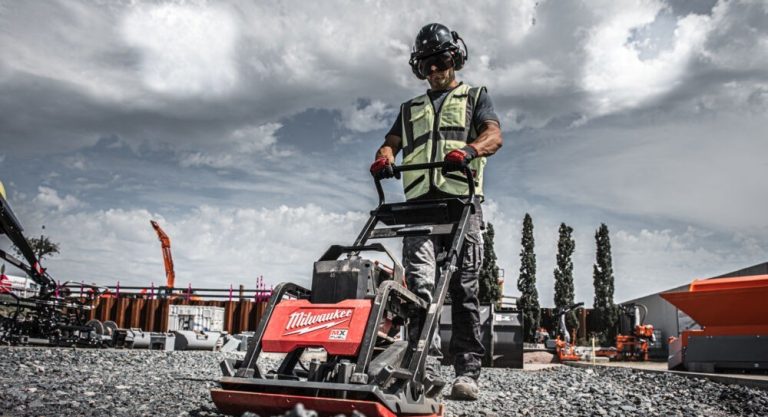Sustainability on construction sites is a major talking point in the industry – and many businesses share a resolve to take measures that reduce carbon emissions and help protect the planet. However, it can also be a confusing and sometimes overwhelming space, especially for those just beginning the journey. Avril Coleman, Business Administration Director at SafeSite Facilities, a UK leader in site safety and security, outlines the ‘quick wins’ that can get you started. 1 Look for opportunities to encourage ‘circularity’ – including hiring instead of buying Circularity, a sustainable model which focuses on re-use and the elimination of waste, should be a key focus for businesses starting their sustainability journey. One solution for construction sites is to consider hiring equipment rather than buying it outright. This might apply to CCTV but also to safety barriers – in fact anything which is not required permanently. 2 Look for suppliers that offer buy-back on products For businesses that prefer to buy, choosing a supply partner that offers buy-back options when the products are no longer required is an alternative way to support circularity, Extending the lifecycle of products is particularly relevant to construction sites, because when a job is complete the temptation is to simply send unwanted products to landfill. At SafeSite Facilities, we offer to buy back products that are still intact, such as fence sets and barriers, to extend the life cycle of these products. It’s something that suppliers in other industries could look at, too. Equipment that is bought back is either re-sold or sent to scrap metal experts who re-use it. Plastic materials often go back to the manufacturer to be re-used or turned into new products. It’s about extending the lifecycle of a product. 3 Choose recyclable products made from natural materials Products that are recyclable, or made from recycled material, create a circular economy. This might include aluminium, which is 100 per cent recyclable, steel, bamboo, wood and cork. Plastics, including plastic barriers, still have an important part to play in the market, too, but look out for plastics that are recyclable. 4 Make the switch to electric vehicles wherever possible Removing petrol and diesel vehicles from a company fleet is a long-term ambition for many businesses in the construction sector. There are still some significant challenges in this arena as we wait for technology to catch up. Electric delivery vehicles, for instance, remain a challenge because of range anxiety and inefficient charging stations. But switching to electric cars for executives and the sales team is more achievable in the short term. 5 Choose suppliers that calculate optimal routes for delivery drivers One way to reduce emissions in a petrol or diesel fleet is to work harder to reduce journey times. AI software is now available that can calculate route planning to deliver more efficient journeys. Upgrading vehicles, putting limiters on vehicles so they can’t go above a certain speed can also have an impact. That’s important because transport is such a huge contributor to the scope of any business’ carbon footprint. 6 Work with other businesses that hold recognised environmental and sustainability certification It’s always good to work with suppliers and partners who share your values, especially when it comes to sustainability. There are a range of environmental and sustainability certifications to look out for, including ISO 14001. This is a global standard that provides a framework for organisations to design and implement an Environmental Management System, created by the International Organization for Standardisation (ISO). 7 Go paperless Removing paper from your operation, and choosing suppliers who have done the same, is an important early step. Long gone are the days when deliveries required a pile of paperwork. Most transactions and documents can now be handled on a screen. There are plenty of software options available now which can facilitate this. 8 Train your team in sustainable practices For a business to be truly sustainable it needs buy-in from all its people. Everyone can play a part. The best way to create a culture of sustainability is to train your people and make reducing emissions part of everyday business. There’s no point in having environmental and sustainability policies if nobody in the company actions them. 9 Consider products that use solar power Reducing energy usage on site is a challenge, but solar power can help. CCTV cameras and lighting can now be powered effectively by solar panels, for instance, and technology is improving all the time. 10 Take measures on site that support and protect wildlife There’s more to sustainability than using less energy and reducing waste. Protecting wildlife should also be a consideration for construction sites, especially those in rural areas. SafeSite Facilities offers a range of newt and reptile wildlife fencing, designed for protected species mitigation projects and managing wildlife movement. These are perfect for applications such as construction sites, power stations, highways, rail networks, utility pipelines, and ecologically sensitive areas. They serve as an effective barrier to keep newts and other amphibians out of your site as well as conforming to the guidelines laid out in the Great Crested Newts Guidelines. There are even fences available to protect snakes. By embracing all ten of these tips, construction sites can make a positive start on the journey towards a more sustainable industry in which carbon emissions are reduced. About the author: Avril Coleman has worked at SafeSite Facilities for nearly a decade and is passionate about creating environments where people feel valued and empowered in the construction industry and beyond. As Business Administration Director, she leads on administrative functions and sustainability at SafeSite Facilities, which sells and hires non-mechanical safety and security products to construction sites, major highways projects, events and festivals nationwide. Avril was named one of the Top 100 Most Influential Women in Construction for 2024 as a Local Hero for the South East, by the National Federation of Builders, for her continued commitment to equality, diversity and inclusion within the construction industry in the UK. Building, Design &














